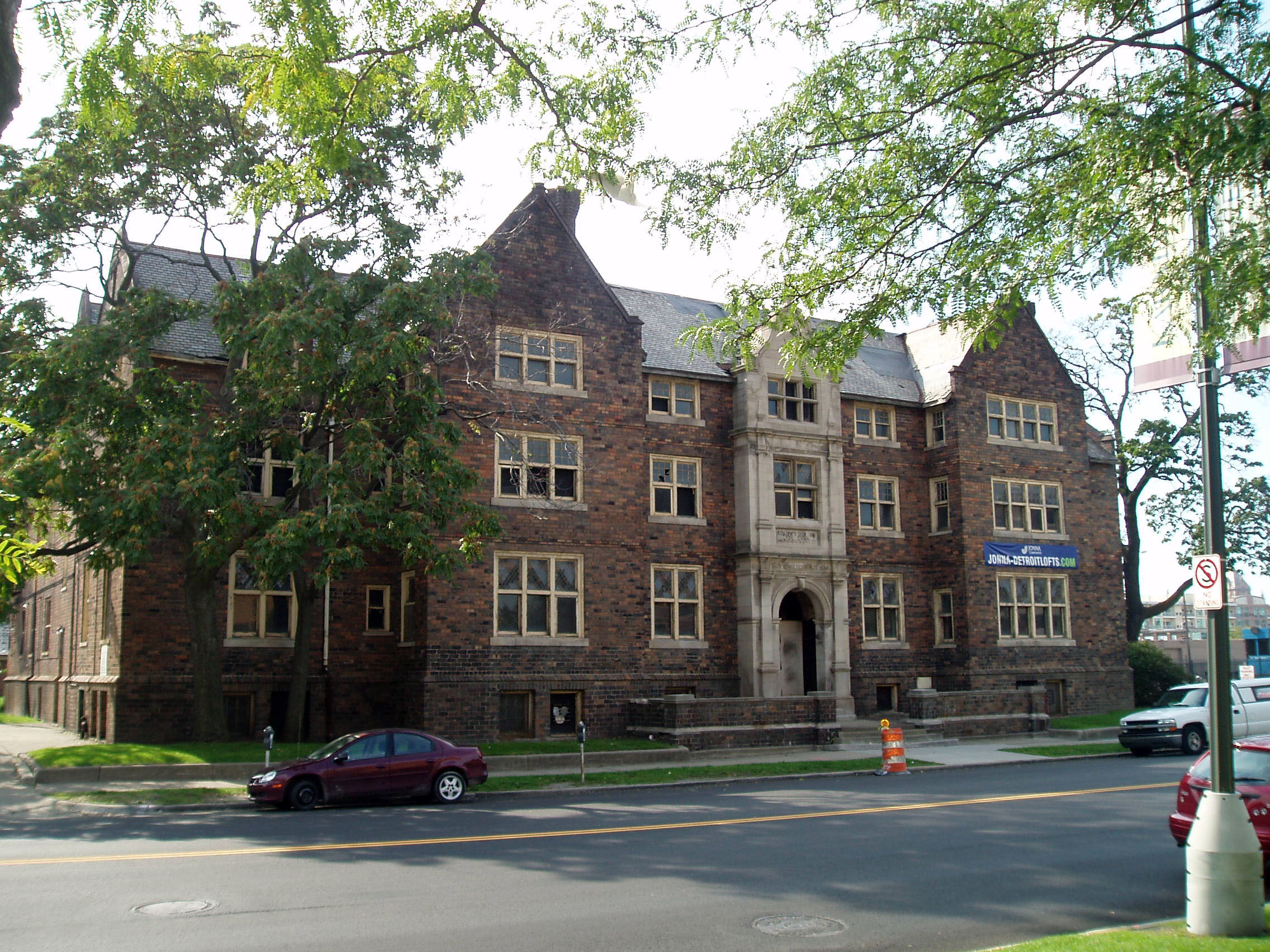

In the later years of the Nineteenth Century, nursing became a profession. For the first time, candidates had to complete formal training in science and medicine, typically training offered by large hospitals. Grace Hospital was founded in 1888 on property across John R from the building you see. Their property adjoined that of Harper Hospital. In 1889, Eugenie Hibbard established the Grace Hospital School of Nursing. This was among the earliest formal nursing programs created in the United States.
Late in the Nineteenth and early in the Twentieth Century, there was concern about the living arrangements of young single women in large cities. Many assumed that cities were dangerous places where the virtues of women might be compromised by scurrilous men. Quite a few dormitories and dormitory-like facilities were established in Detroit and other cities for unmarried women who came from rural areas to cities such as Detroit for an education or employment. Helen Hardy Newberry donated funds that assisted in the construction of the impressive building that continues to carries her name. Presumably, she was helping to preserve the talents and virtues of women as the studied nursing.
Helen Newberry was the second wife and—by the time she made her donation for this structure—the widow of John Stoughton Newberry who was one of the most prosperous of the Detroit’s early entrepreneurs. Born close to the Canadian border in Watertown, New York, John Newberry and his parents migrated west to Michigan while he was young. He lived in Detroit and Ann Arbor and graduated from a school in Romeo. He then matriculated at the University of Michigan and earned a diploma in 1847. For several years he worked as a civil engineer for various railroads, but then became interested in a career as a barrister. He read law, and in 1853, was admitted to the Michigan bar. In the early 1860s, he entered the rail car manufacturing business. Detroit became a center for that industry since its factories produced the iron and steel needed to build rail cars, while the great white pine forests of the upper sections of the Lower Peninsula supplied the requisite lumber. At an early date in the 1860s, Newberry turned his attention and his investments to the Michigan Car Company, one of the largest rail car firms of the late Nineteenth Century. In 1862, President Lincoln appointed him a captain in the Calvary and he served for two years in Civil War. He resigned his military appointment in 1864 and returned to his entrepreneurial endeavors in Detroit. John Newberry was one of the founders of the Detroit Car Wheel Company—a successful firm that produced steel wheels for rail cars. The first modern steel mill in the United States opened in nearby Wyandotte in 1865. He also invested in railroads, especially in Michigan. He was active in Michigan’s Republican Party and was elected to represent Detroit in Congress for one term beginning in 1881.
John Newberry died in 1887 and left an estate that permitted his widow and his daughters to fund a variety of institutions and facilities that still bear his surname. This list includes the Helen Newberry Home for Nurses in Detroit, the Helen Newberry Residence Hall for Women on the campus of the University of Michigan and the Newberry-Joy Hospital in Newberry, Michigan in the Upper Peninsula. That small town in Luce County carries Newberry’s name because he was one of the leading investors in the railroad that connected that location to the rest of the world, a rail line that became known as the Duluth, South Shore and Atlantic Railroad and is now part of the Canadian National system.
I once though that the building you see on this page was designed by Elijah E. Myers. He was the controversial architect who designed three state capitol buildings in the United States; those for Colorado, Michigan and Texas. He designed the massive Harper Hospital Building on John R that was razed in 1970. Benjamin Gravel who has, arguably, the most inclusive information about the architects who designed buildings in Detroit, confirms that this nurses homes was designed by Nettleton and Kahn.
The renovation of this building was completed in 2011 and residents began moving into 28 apartment units in early 2012. I believe that most of them are one bedroom unitsd but some provide two bedrooms. A major effort was made to preserve the original quality of this elegant building. The leaded windows on the ground floor were retained, the lobby with its extensive wood paneling was restored and many of the original bricks were removed, refurbished and then reused in the reconstruction. The expansion of employment at the Detroit Medical Center and at Henry Ford will create a demand for more residences in or near downtown Detroit. This is another example of the successful renovation and repurposing of an attractive an historically meritorious building near downtown Detroit.
Architect: George Nettleton and Albert Kahn
Date of Construction: 1898
City of Detroit Designated Historic District: Not listed
State of Michigan Registry of Historic Places; Not listed
National Register of Historic Sites: Listed August 7, 2008. I have also seen 2014 as the date of this listing.
Use in 2015: Apartments.
Website for developer: www.jonna-Detroitlofts.com
Photograph: Ren Farley; September 20, 2008
Description uopdated: June, 2015